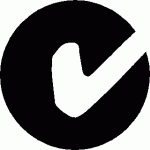As people use an increased number of technological items in every field imaginable, there is the chance that these items can interfere with each other and cause undesirable effects. An early example of this is the use of cordless telephones manufactured in the early 1980s – although they worked reasonably well, if your neighbour had one there was a good chance that they would interfere with each other. Or a parents’ baby monitor might have been affected by trunk radio systems in some areas, resulting in some “interesting” noises from the bedroom.
To combat these and many other possibilities, a wide variety of standards and compliance requirements have been created to enable devices to co-exist – and to prove your products are designed appropriately. Ultimately these requirements do need to be met in order to sell your products, making compliance non-negotiable.
So what needs to be done? Let’s examine some of the more important compliance standards, which include:
Electromagnetic compatibility testing – this ensures your product doesn’t generate electromagnetic disturbances that can affect other items. In Australia we use the “C-Tick” standard outlined by the ACMA. This cover items such as industrial, scientific and medical equipment; audio-visual and IT equipment; as well as household appliances and motor-operated equipment and tools. For the European Union market, the standard is CE (Compliance Engineering) and covers over fifteen separate possible standards for various devices. In the United States their FCC also has similar testing and standards requirements. Anecdotally speaking, the larger the prospective market – the greater the amount of testing.
 UL Certification – The Underwriters Laboratory is a private organisation based in the United States whose goal is to develop standards and tests to avoid hazards especially in electrical devices. They have over 15 standards just for electrical and electronic products such as battery standards, EMF from electric motors and so on. Having your products meet the relevant UL (and FCC) standards would be required for use in North America and be looked upon favourably in other markets.
UL Certification – The Underwriters Laboratory is a private organisation based in the United States whose goal is to develop standards and tests to avoid hazards especially in electrical devices. They have over 15 standards just for electrical and electronic products such as battery standards, EMF from electric motors and so on. Having your products meet the relevant UL (and FCC) standards would be required for use in North America and be looked upon favourably in other markets.
RoHS directive compliance – The “Restriction of Hazardous Substance” directive is a relatively recent yet important standard to meet. After taking effect in 2006, it is enforced in all member states of the EU, and also a positive compliance to aim for as RoHS is recognised in other markets. To be RoHS compliant, your products must contain less than a certain amount of lead, mercury, cadmium, hexavalent chromium, polybrominated biphenyls or polybrominated diphenyl ether. Great care needs to be taken by designers and purchasing staff to ensure all ingredients, components and assemblies used in the final product meet this standard, and the same issues as avoiding counterfeit electronic components can apply when sourcing RoHS-compliant parts.
WEEE compliance – This can be considered a partner to RoHS – as the Waste Electrical and Electronic Equipment compliance requires manufacturers or importers to not only specify the material content of their products, but also pay for all costs related to the collection, transportation and recycling of their products. Compliance can be costly and there is no doubt will be included in the product price for EU customers, however the environmental rewards can be claimed as a product benefit.
Industry-specific standards – Each industry also has its’ own specific standards to allow for peculiarities or special circumstances. One example is the mining industry and electronic/electrical equipment used in underground coal mines. Standards Australia has a range that take explosive atmospheres into account – so lighting, power outlets, communication equipment, portable motor-operated devices and more need to be designed in a way so they don’t spark or create heat hazards.
Military Standards – as expected, Defence customers pose their own set of challenges and this also includes military standards. These are generally much higher than those required for consumer or industry use, and especially in the electronics field can require sourcing components that also meet the standards. Existing products will usually require redesigning for military use, including test and measurement or communication products.
Product compliance and meeting standards may seem like a nightmare, however with the appropriate research of your customers’ needs and taking these into account before and through the design process, you can produce the right products for your clients. If you are unsure of what to do or where to start, here at the LX Group we can work with you to achieve your compliance goals efficiently, including:
- EMC emissions and immunity testing (including C- Tick, FCC and CE)
- Electrical safety (mains certification)
- UL certification
- RoHS and WEEE compliance
- Industry-specific standards (including medical and mining)
- Ingress Protection (IP) rating
- Packaging and labelling requirements
For more information or a confidential discussion about your ideas and how we can help bring them to life – click here to contact us, or telephone 1800 810 124.
LX is an award-winning electronics design company based in Sydney, Australia. LX services include full turnkey design, electronics, hardware, software and firmware design. LX specialises in embedded systems and wireless technologies design. https://lx-group.com.au
Published by LX Pty Ltd for itself and the LX Group of companies, including LX Design House, LX Solutions and LX Consulting, LX Innovations.
